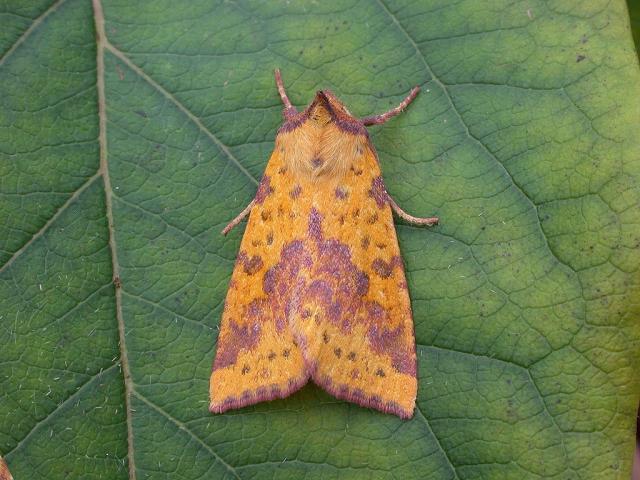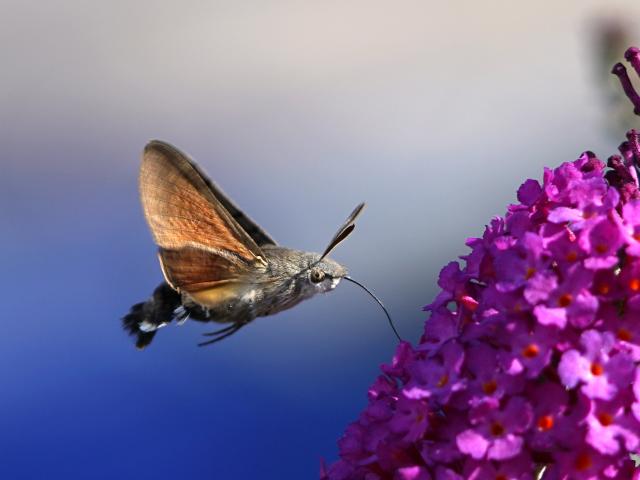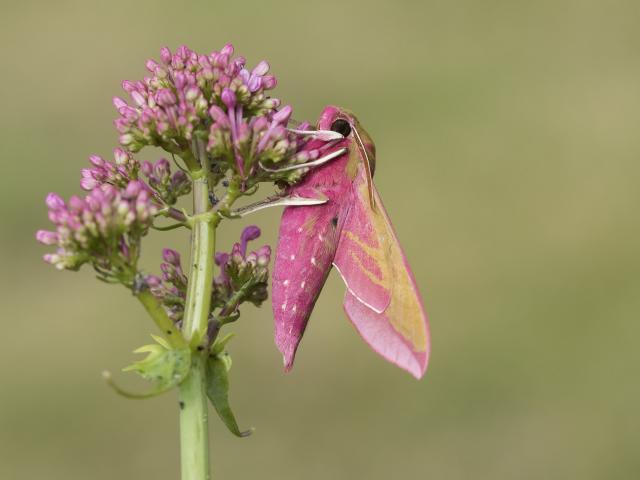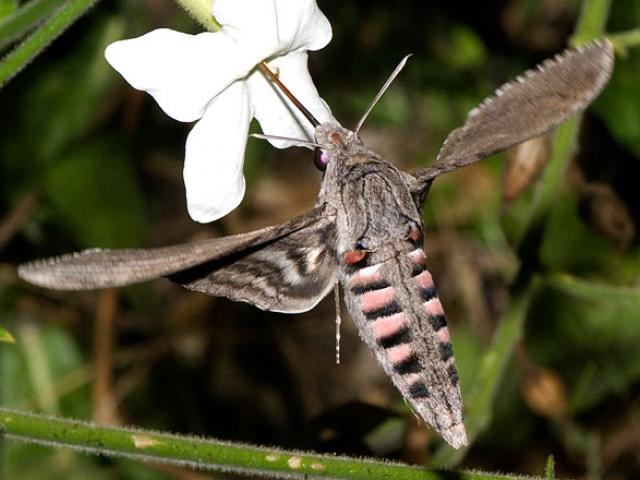On a sunny summer’s day you might have noticed day-flying moths in your garden, such as the Humming-bird Hawk-moth buzzing around the Buddleia, but have you been out after dark with a torch to see which flowers the night-flyers are favouring?
Some adult moths don’t feed at all, such as the Eyed, Lime and Poplar Hawk-moths, but most moths do have to consume nectar to give them the energy needed for flying. While visiting plants they accidentally carry pollen between flowers, so playing an important role in pollination. Flowers that have evolved to attract moths as pollinators are often shades of white, lilac or pale pink so they can be seen at night and they emit their scent more strongly after dark.
As part of Butterfly Conservation’s Moths Matter campaign we would like to encourage you to add nectar plants to your garden to cater for nocturnal moths. You could add plants in pots, fill gaps in the flowerbeds or give a whole border a makeover. Choose a variety of plants - particularly those which are scented or white or with tubular flowers - that will be in flower throughout the year from early spring to late autumn.
The following list is just a starting point as adult moths may take nectar from many more types of flowers including the same plants that are visited by bees, hoverflies and butterflies.
Climbers

Common Ivy Hedera helix is a native, self-clinging, evergreen climber that can be grown up walls and fences. It likes full sun or partial shade in moist but well-drained soil. Flowers appear late in the year, from September to November, providing a lifeline to moths and butterflies when other nectar sources are unavailable. If you pop out with a torch on an autumn evening, you could see some lovely moths such as the Pink-barred Sallow, Angle Shades, Green-brindled Crescent and Red-green Carpet.
Honeysuckle Lonicera periclymenum will twine through a tree but needs some support growing up a fence. This native climber is an attractive, sweet-scented, night-time, summer nectar source for Privet or Elephant Hawk-moths and is also a foodplant for Early Grey and Twenty-plume Moth caterpillars. It likes to have its roots in the shade and head in the sun.
Shrubs

Buddleia davidii is a large, deciduous shrub which prefers a sunny position on well-drained soil. The long, purple or white flower heads are very attractive nectar sources. Buddleia should be deadheaded during flowering (from July to September) to stop the spread of seeds, then cut down by half in the autumn and again in spring after which it will grow rapidly again. Compact varieties for patio pots are also available.
Hebe spp. are small, evergreen shrubs with white or pink flower spikes from late summer to autumn. They like a sunny, sheltered spot.
Perennials
A good selection of perennials should be available from garden centres in May.

Red Valerian Centranthus ruber and White Valerian Centranthus ruber 'Albus' are popular nectar sources that like full sun and well-drained soil. Deadhead regularly to maintain flowering from May to October and to prevent excessive self-seeding. Cut down to the ground in the autumn and they will grow again in spring to about 80cm tall.
Perennial Wallflower Erysimum ‘Bowles’ Mauve’ is a bushy evergreen with attractive purple flowers for most of the year, on stems reaching 75cm. It also likes full sun and well-drained soil. In the summer Silver Y have been seen to flock around it at dusk and Large Yellow Underwing later in the evening.
Bladder Campion Silene vulgaris is a native plant reaching 60cm tall, that likes sun and well-drained soil and can be grown from seed. It has white flowers from June to August that emit a clove-like scent at night. White Campion Silene latifolia also has clove-scented flowers from May to September. Male and female flowers occur on different plants.
Biennials
You can either sow seeds this year, for flowers next year, or look for plants at the garden centre.
Sweet Rocket Hesperis matronalis grows to a metre high in full sun or partial shade and has fragrant, pale lilac or white flowers from May to June. Sow seed from March to May, where it is to grow. It will self-seed in the future.
Evening Primrose Oenothera biennis likes a sunny, well-drained site. It has stems up to 1.5m high with bowl-shaped, yellow flowers from June to September that open in late afternoon or evening and release their scent. Seeds can be sown directly where they are to grow after the final frosts in early summer.
Annuals
You can grow the following annuals from seed or buy them as bedding plants:

Flowering Tobacco Nicotiana alata is a very popular and elegant 60cm-tall bedding plant. The long, tube-shaped, sweet-scented flowers come in white, lime green and pink and have petals that form five-pointed stars. It blooms from June to September and likes full sun or partial shade. Sow indoors in March or April but don’t cover the seeds as they need light to germinate. Plant out after the last frosts or direct sow in early May.
Night-scented Stock Matthiola longipetala has small, pale lilac to white flowers which open in the late afternoon to evening and emit their fragrance. The plants reach 45cm tall and need full sun and well-drained soil. Seeds can be sown, from February to May, in pots or where they are to grow.
Sweet Alyssum Lobularia maritima is perfect for a sunny spot and creates low growing mounds with fragrant little blooms, of colours including purple or white. Sow seeds outdoors, from March to May, where they are to grow for flowers from June to October.
If you are planting a whole border, you could put some climbers and tall shrubs at the back and in front, a mix of perennials, biennials and annuals. When sowing seeds or arranging your planting scheme, remember to check the final heights of the plants and also whether they require sun or shade or a particular type of soil.
Once you have provided nectar for the adult moths, you might want to investigate how to cater for their caterpillars - some will eat a range of plants and others have very specific requirements.
Your planting isn’t just for the moths. When you go outside after dark, to check which moths are feeding, you too can enjoy the fragrant flowers glowing in the moonlight.
Happy Gardening!
The Secret Gardener


